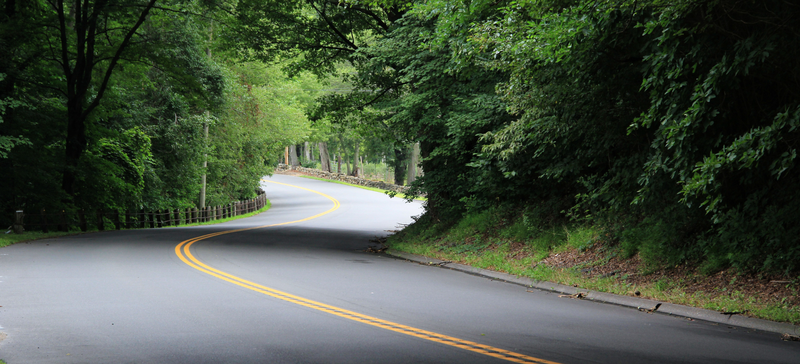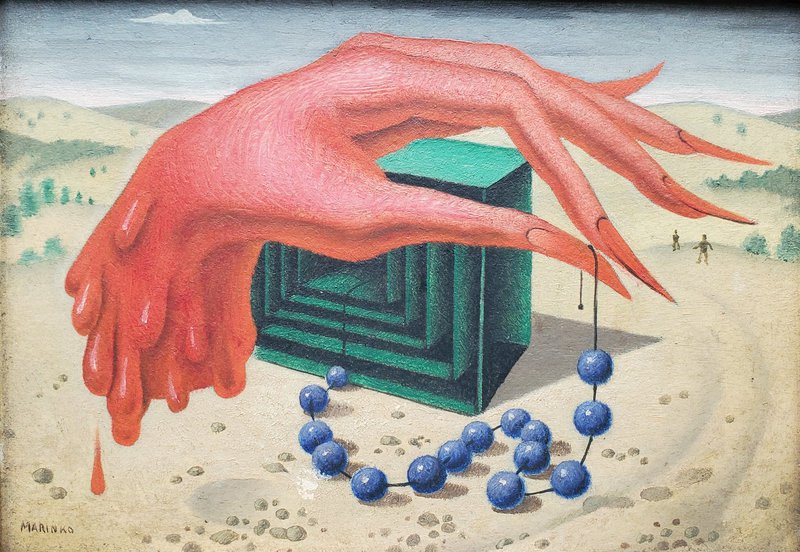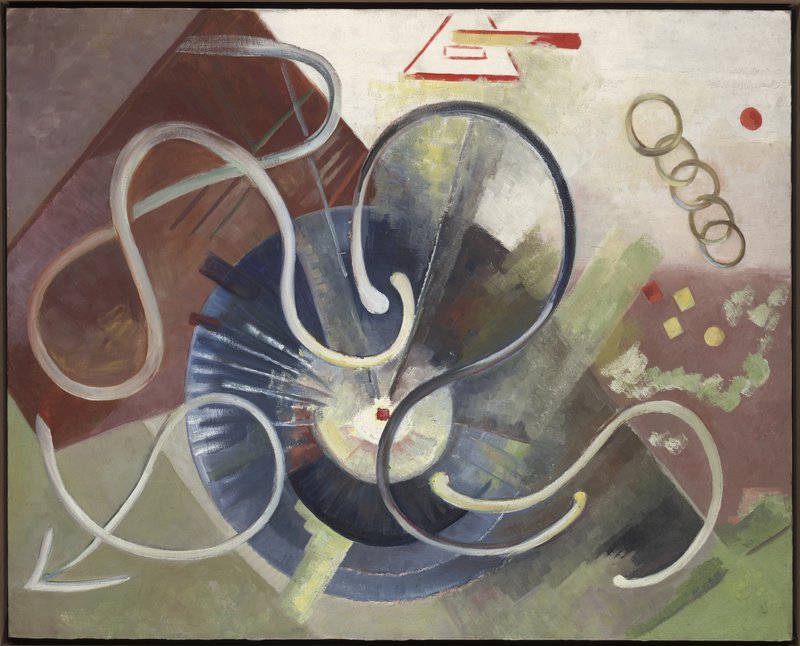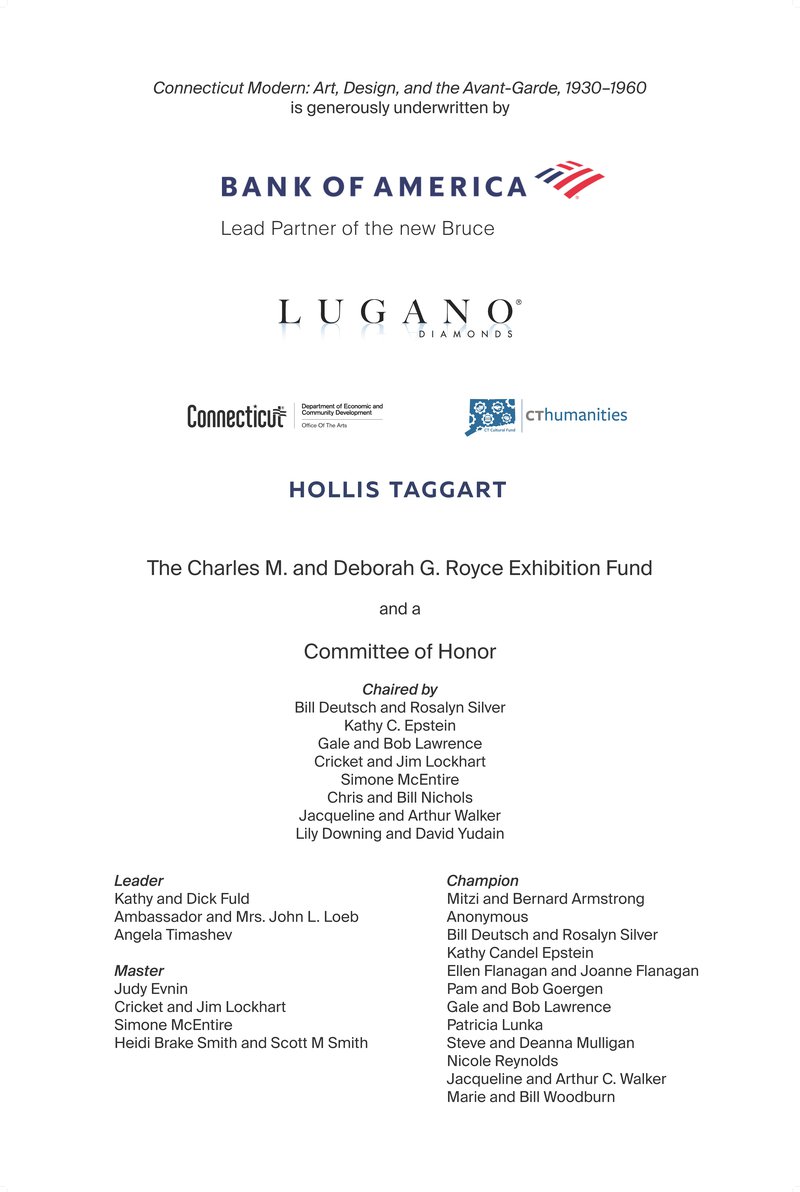
Connecticut Modern: Art, Design, and the Avant-Garde, 1930–1960
September 23, 2023-January 7, 2024
For three decades, Connecticut was a true international center of innovation in the arts. Although turn-of-the-century landscape painting has been justly celebrated at the Bruce and elsewhere, the significance of the state’s place in the history of 20th century modernism has gone largely unnoticed.
Coinciding with the arrival from Paris in Roxbury of sculptor Alexander Calder and his wife Louisa in 1933 and the political climate in Europe, transplanted Parisian artists transformed Connecticut into a Surrealist capital-in-exile. Painter Yves Tanguy settled in Woodbury with his American wife, painter Kay Sage whose cousin, sculptor David Hare, lived near the Calders in Roxbury while Rose and André Masson moved to New Preston. Several significant artists of the Magic Realist mode, an important movement of the interwar years, also lived and worked in Connecticut: Peter Blume and his wife in Sherman, and Pavel Tchelitchew and Paul Cadmus in Weston. Recently arrived French sculptor Louise Bourgeois and her American husband, art historian Robert Goldwater, bought a place in Easton in 1941. The great Armenian-born, New-York-based painter Arshile Gorky eventually moved to Roxbury.
Just as the Parisian avant-garde and its American devotees were drawn to Connecticut, so were major members of the vanguard wing of German art. Artists, architects and designers who had studied and taught at the Bauhaus found their way to America after Hitler closed the school in 1933, including painting professor Josef Albers and his wife, weaver Annie Albers. They moved to Connecticut in 1950 after Josef was made chair of the design department at the Yale School of Art. Bauhaus architect and designer Marcel Breuer began teaching at Harvard in 1937. Among the students who would come under his influence were Philip Johnson, Landis Gores, John Johansen and Eliot Noyes. Collectively, they would come to be known as the Harvard Five. In fact, they might more accurately be called the New Canaan Five, since all of them would go on to build acclaimed modernist houses in New Canaan. Most notable of these is Philip Johnson’s Glass House of 1949.
Residing in the state were the legions of art world “movers and shakers” who amassed modernist collections and influenced the institutions with which they were connected. Artist and collector Katherine Dreier, along with Marcel Duchamp and Man Ray, co-founded the pioneering organization for the exhibition of contemporary art, the Société Anonyme, whose holdings would eventually be split between MoMA and Yale. During the last decade of his life, photographer Walker Evans taught at the Yale School of Art, from which in 1960 sculptor Barbara Chase-Riboud became the first African American woman to receive the MFA. In just over a year, 1933–34, A. Everett “Chick” Austin, trailblazing director of the Wadsworth Atheneum, co-sponsored choreographer George Balanchine’s immigration to the U.S., organized Picasso’s first retrospective in America, and staged the world premiere of the opera Four Saints in Three Acts, with book by Gertrude Stein and music by Virgil Thomson, and sets and costumes by Florine Stettheimer. The art collection in Farmington of James Thrall Soby--who in 1931 had worked with the Wadsworth to organize the first museum exhibition of Surrealism--included masterpieces by Picasso, De Chirico, Balthus, and Calder, among many others; it became a pilgrimage site for all those interested in contemporary art in the 1930s and 1940s. Soon after, Burton and Emily Tremaine began to assemble the Miller Company Collection of Abstract Art in Meriden; pacesetting dealer Edith Halpert, resident of Newtown, created an essential link between contemporary art and American folk art; and dealer of Surrealist art, Julien Levy resided in Bridgewater.
The exhibition concludes with a selection of works by major figures, including Robert Motherwell, Helen Frankenthaler, Sol LeWitt, Cleve Gray, and Jasper Johns, who helped maintain Connecticut as an important site of contemporary art making.
All text for this exhibition will be available in both English and Spanish. (Todo los textos de esta exposición estaran disponibles en Inglés y en Español).
Connecticut Modern: Art, Design, and the Avant-Garde, 1930–1960 is generously underwritten by:
![BoA with tag line[1] smaller](/media/images/BoA_with_tag_line1_smaller_sU6UiX2.width-800.png)

Bruce Presents: Thoughts on Curating Connecticut Modern with Dr. Kenneth Silver
Date: Thursday, December 14, 2023
Time: 6:00-7:30 pm
Audience: Adult Program
Cost: Members - Free, Non-members $25
In-person or Livestream
Bruce Presents: Thoughts on Curating Connecticut Modern with Dr. Kenneth Silver
Connecticut Modern Driving Tour

Uncover the hidden gems of Connecticut Modernism on a self-guided Connecticut Modern Driving Tour.

George Marinko (American, 1908-1989)
Hypothetical Gallipot, c. 1938
Oil on Masonite, 5 x 7 in.
Collection of the Mattatuck Museum; Gift of Mr. George Heard Hamilton, 1978

Katherine Dreier (American, 1877-1952)
Explosion, 1940-47
Oil on canvas, 24 1/16 x 29 15/16 in.
Yale University Art Gallery, Gift of Katherine S. Dreier to the Collection Société Anonyme

Charles Sheeler (American, 1883-1965)
On a Connecticut Theme, 1958
Oil on canvas, 19 1/8 x 29 1/8 in.
Whitney Museum of American Art, New York. Lawrence H. Bloedel Bequest
Photo Credit: Digital image © Whitney Museum of American Art / Licensed by Scala / Art Resource, NY



